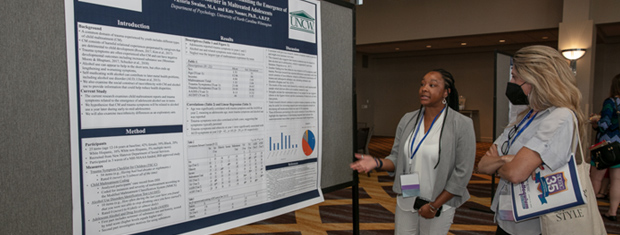




The APSAC Advisor is a peer reviewed quarterly news journal for professionals in the field of child abuse and neglect.
The APSAC Advisor provides succinct, data-based, practice-oriented articles that keep interdisciplinary professionals
informed of the latest developments in policy and practice the field of child maltreatment. It is designed to highlight
best practices in the field and publish original articles and current information about child maltreatment for professionals
from a variety of backgrounds including medicine, law, law enforcement, social work, child protective services, psychology,
public health and prevention in the U.S.
 If you wish to learn more about submitting an article to the Advisor, please click here.
If you wish to learn more about submitting an article to the Advisor, please click here.
This library contains Advisor issues dating back to the first issue in 1988. The most recent issue appears at the top.
Scroll down to select past issues by year and issue number. Once a publication appears in the box, you
can use the Enlarge button to open the document in a new window or tab (depending on how your browser is set up).
This will allow you to view the document with larger print.
To print a document, first use the Enlarge button to open the document in a new window or tab. Then use your browser's Print command.
To return here from a new tab, close the tab. To return from a new window, click your browser's Back button.
In the listing below, click on a year and issue number to see the articles in that publication.
2002 Number 4
Holding Therapy Part Two: Introduction
The impetus for these two issues of the APSAC Advisor has been building for a number of years. The death of Candace Newmaker, the child murdered by her therapists in Colorado two years ago (King, 2000), certainly created the need for a response to coercive therapy tactics from child mental health professionals. However, as Part I of this special issue was being prepared, another child, who was being seen at an attachment center in Utah, was killed (Broughton, 2002).
Attachment Theory and ‘Attachment Therapy’
Eminent attachment theory researchers Sroufe and Erickson have answered some critical questions (developed by colleagues) to help advance caregiver and therapeutic interventions with and treatment of children in cases involving maltreatment, unresolved trauma, attachment disorders, and the like.
Educating About Holding Therapy: Comments From a Child Welfare Administrator
As we can see from this series about “rage reduction,” it is understandable why child welfare workers and foster parents who work with children with extreme needs are susceptible to trying new treatments. This is particularly true when no treatments have proven to be successful when dealing with children with extreme needs.
Why Caregivers Turn to ‘Attachment Therapy’ and What We Can Do That Is Better
It is time that child abuse professionals formally raise concerns about the “attachment therapy” programs that have proliferated across the country.
Points of Breakdown in the Provision of Services to Severely Disturbed Foster and Adopted Children
The placement of a child in an adoptive or foster home reflects the confluence of many factors. Chief among them is the fact that a new relationship is forming because a previous relationship has not been sufficient for this child. The new relationship and the previous one(s) are the critical players.
The purpose of Journal Highlights is to alert readers to current literature on child abuse. Selected articles from journals representing the variety of disciplines reflected in APSAC's membership are presented in the form of an annotated bibliography.
APSAC Advisor 14(4): Full issue